Introduction to Bumper Pull Dump Trailers
Bumper pull dump trailers have become an indispensable tool in various industries, including construction, landscaping, and agriculture. Their practicality stems from their ability to simplify transportation and dumping tasks, thus making them a favored choice among contractors and DIY enthusiasts alike.
What is a Bumper Pull Dump Trailer?
A bumper pull dump trailer is a type of trailer designed for hauling materials and equipped with a hydraulic lift system that enables it to discharge its load at the push of a button. What sets it apart from other trailers is its design, which attaches to the rear bumper of a tow vehicle, making it easier to maneuver and operate compared to gooseneck or fifth-wheel trailers.
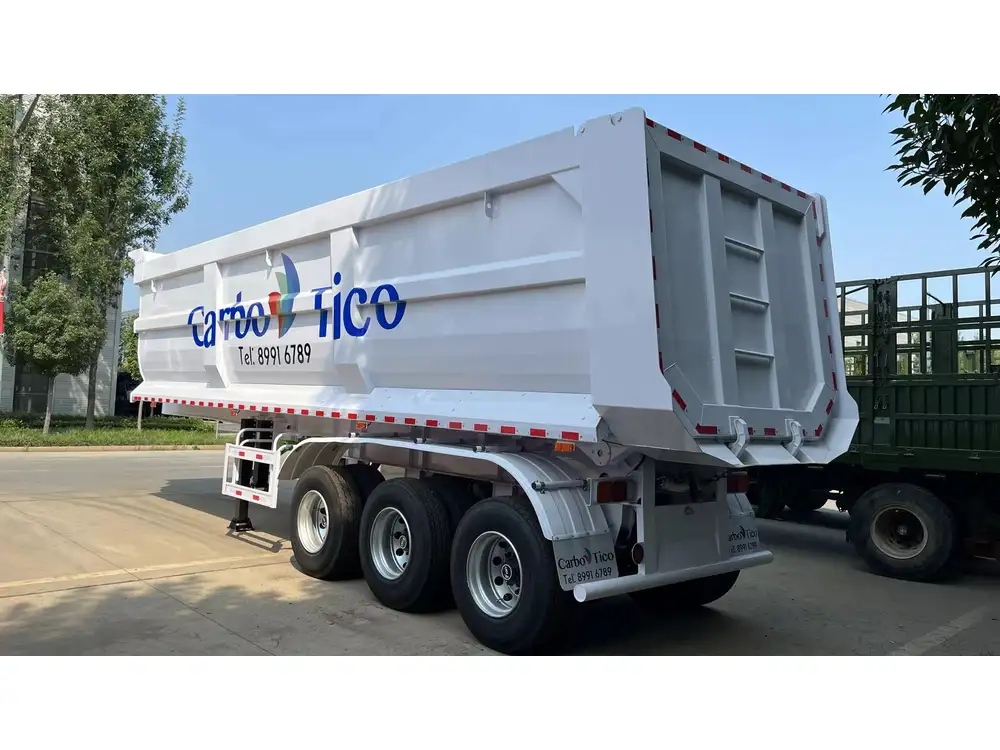
The Components of a Bumper Pull Dump Trailer
To fully grasp how a bumper pull dump trailer operates, it’s essential to understand its primary components:
| Component | Function |
|---|---|
| Frame | Provides structural integrity and holds all other components. |
| Axle | Houses the wheels, supporting the trailer’s weight. |
| Hitch | Connects the trailer to the tow vehicle securely. |
| Dump Bed | The loading area where materials are carried. |
| Hydraulic Lift System | Responsible for raising and lowering the dump bed. |
| Control Mechanism | Allows the operator to control the dumping process. |
Frame Construction
The frame of a bumper pull dump trailer typically consists of steel or aluminum, offering durability and strength. Depending on the manufacturer, the frame can be reinforced with cross members, providing additional support for heavy loads.
Axle Configuration
Dump trailers often come with different axle configurations, such as single or tandem axles. Single axle trailers are lighter and easier to tow, making them suitable for smaller jobs. In contrast, tandem axle configurations typically support heavier loads, offering better stability on uneven terrain.
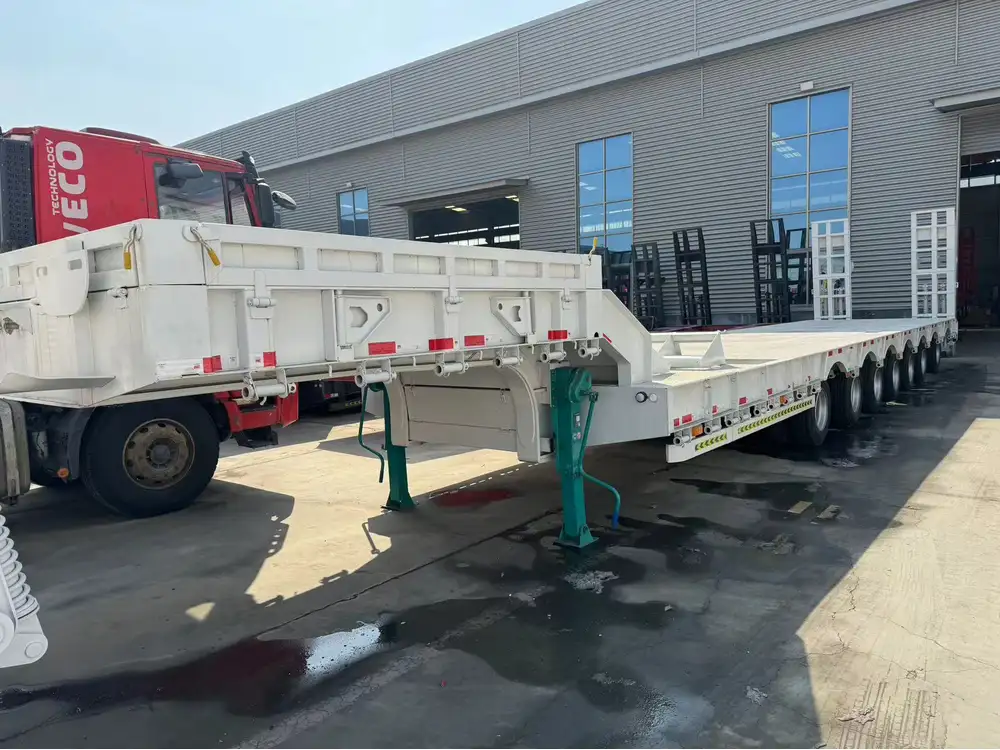
The Hitch System
The hitch system is a pivotal component that affects performance. This system is generally a coupler attached to the trailer’s frame, which connects to the tow vehicle’s hitch receiver. Ensuring proper hitch alignment and weight distribution is vital for safe towing, as improper setups can lead to trailer sway or difficulty in braking.
The Dump Bed
The dump bed, where materials are loaded, is typically made from durable steel and comes in various sizes to accommodate different payload capacities. Configurations may include high sides for increased volume or lower sides for easy loading and unloading.
Hydraulic Lift System
At the heart of the bumper pull dump trailer’s functionality is the hydraulic lift system, which typically consists of the following:
- Hydraulic Cylinder: This is the main component that lifts the dump bed, powered by hydraulic fluid.
- Pump: This component supplies hydraulic fluid to the cylinder.
- Control Switch: Located either on the trailer or inside the towing vehicle, this switch activates the hydraulic system to raise or lower the dump bed.
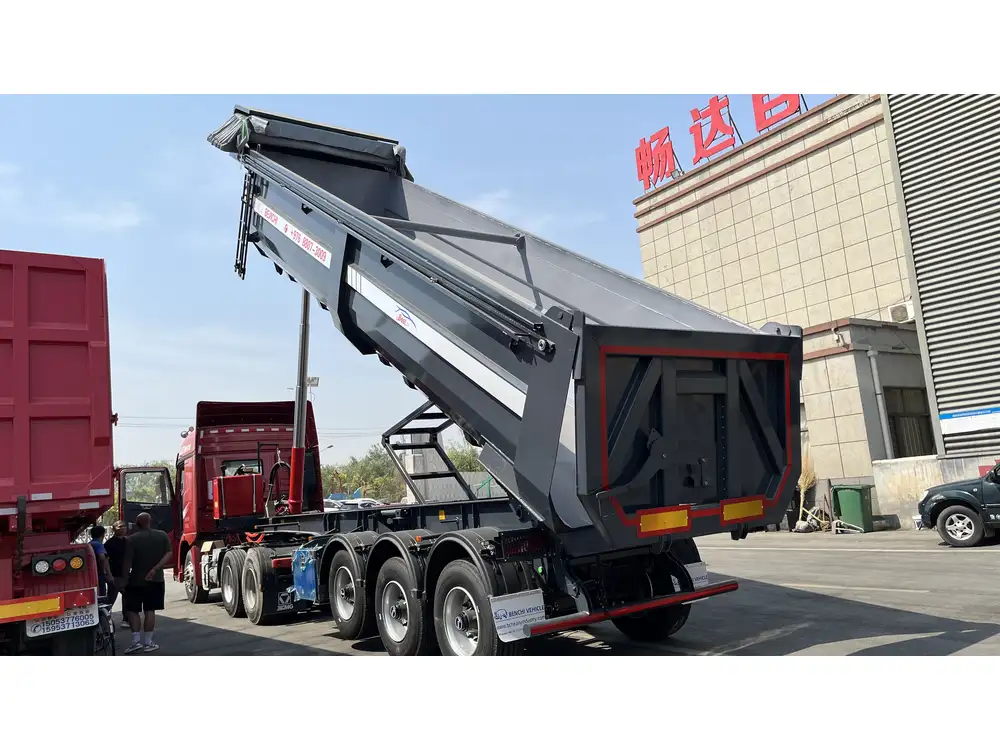
How Does a Bumper Pull Dump Trailer Work?
Understanding how a bumper pull dump trailer works involves exploring its operation phases:
Loading: Materials are loaded onto the dump bed using various methods, such as a loader, shovel, or by hand.
Connecting the Trailer: The operator connects the trailer to a compatible tow vehicle, ensuring that the hitch is secure and that the safety chains are fastened.
Hydraulic Activation:
- The operator uses the control switch to engage the hydraulic pump.
- This action moves hydraulic fluid into the cylinder, causing it to extend and lift the dump bed.
Dumping: Once the trailer reaches the desired height, the operator can tilt the bed using the same control mechanism to release the load.
Lowering the Trailer: After dumping, the operator returns the control to a neutral position, allowing the hydraulic fluid to flow back, lowering the dump bed into the original position.
Safety Measures During Operation
Safety is paramount when operating bumper pull dump trailers. Here are some essential safety measures to observe:
- Load Distribution: Proper weight distribution prevents swaying and handling issues. The load should be evenly distributed over the axle(s).
- Secure Materials: Ensure that loads are secured to prevent movement during transit.
- Check Connections: Regularly check hitch connections and safety chains.
- Inspection Before Use: Conduct a pre-trip inspection of tires, brakes, and hydraulic systems.
Advantages of Bumper Pull Dump Trailers
When considering whether to invest in a bumper pull dump trailer, the following advantages make them an attractive option:
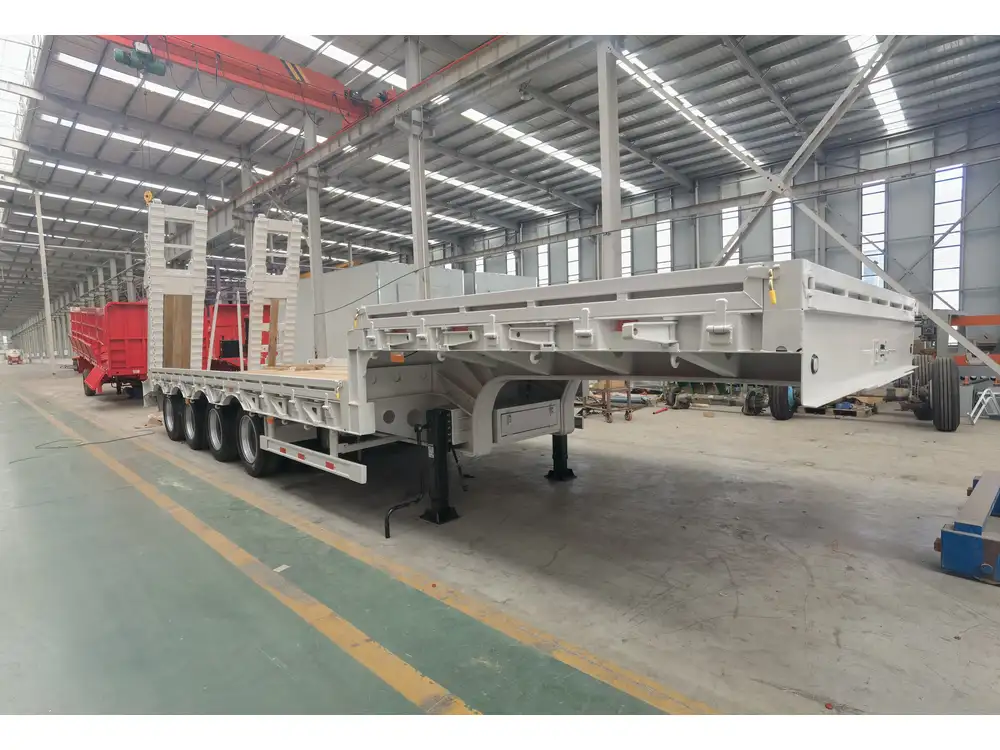
1. Easy Maneuverability
Bumper pull dump trailers are designed to be easily maneuvered, which allows users to navigate tight spaces or congested job sites effectively.
2. Versatility in Use
These trailers are not limited to one specific function; they can handle a variety of materials, from dirt and gravel to debris and equipment, catering to multiple industries.
3. Enhanced Efficiency
The convenience of the hydraulic lift system dramatically increases the efficiency of unloading, enabling operators to complete tasks more quickly compared to manual dumping techniques.

4. Affordable Maintenance
With fewer moving parts than some other trailer types, bumper pull dump trailers generally have lower maintenance costs, making them a cost-effective choice over time.
Key Considerations When Choosing a Bumper Pull Dump Trailer
While the features and functionalities of bumper pull dump trailers can be appealing, several considerations should inform your purchasing decision.
Payload Capacity
When selecting a dump trailer, pay careful attention to the payload capacity. This specification dictates how much material the trailer can safely carry, which is crucial for compliance and operational efficiency.
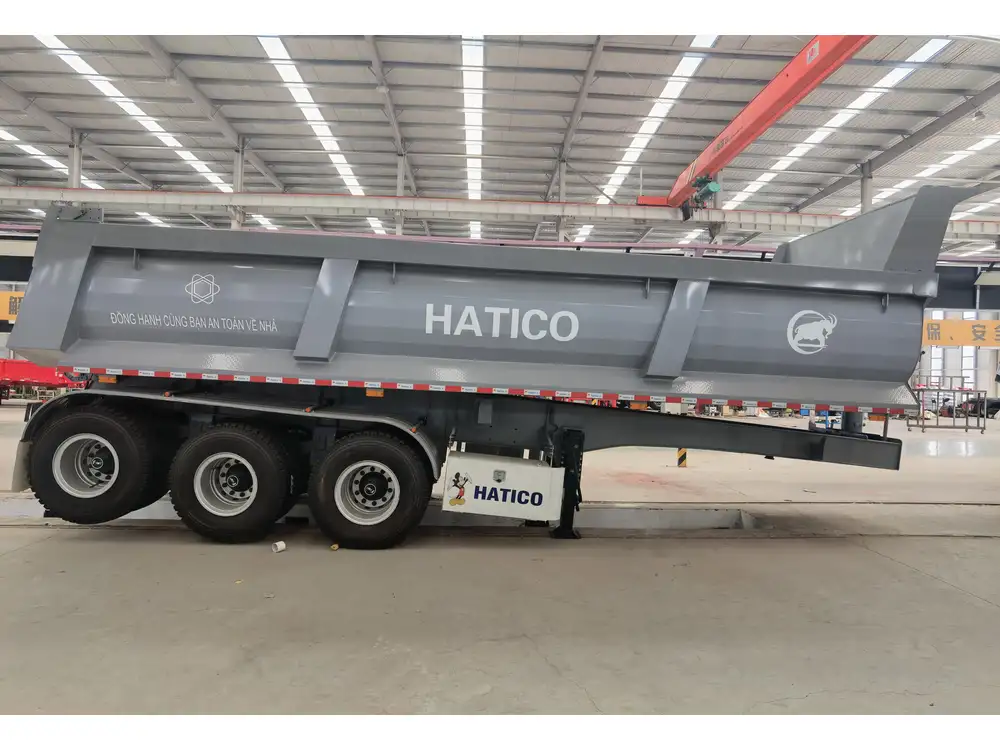
Frame Material and Design
The material used in the frame construction (steel vs. aluminum) affects weight, durability, and cost. Steel is robust but heavier, while aluminum offers corrosion resistance and lighter weight, which can enhance towing efficiency.
Hydraulic System Specifications
Look for a hydraulic system that balances performance with reliability. The size, strength, and pump’s efficiency will influence how quickly and easily the bed can be lifted. Consideration of the system’s compatibility with your intended load types is also essential.
Tire Size and Type
Tires play a crucial role in the trailer’s performance on different terrains. Larger tires may offer better traction and impact absorption on rough surfaces. Adequate tire ratings concerning the load capacity ensures safety and performance.
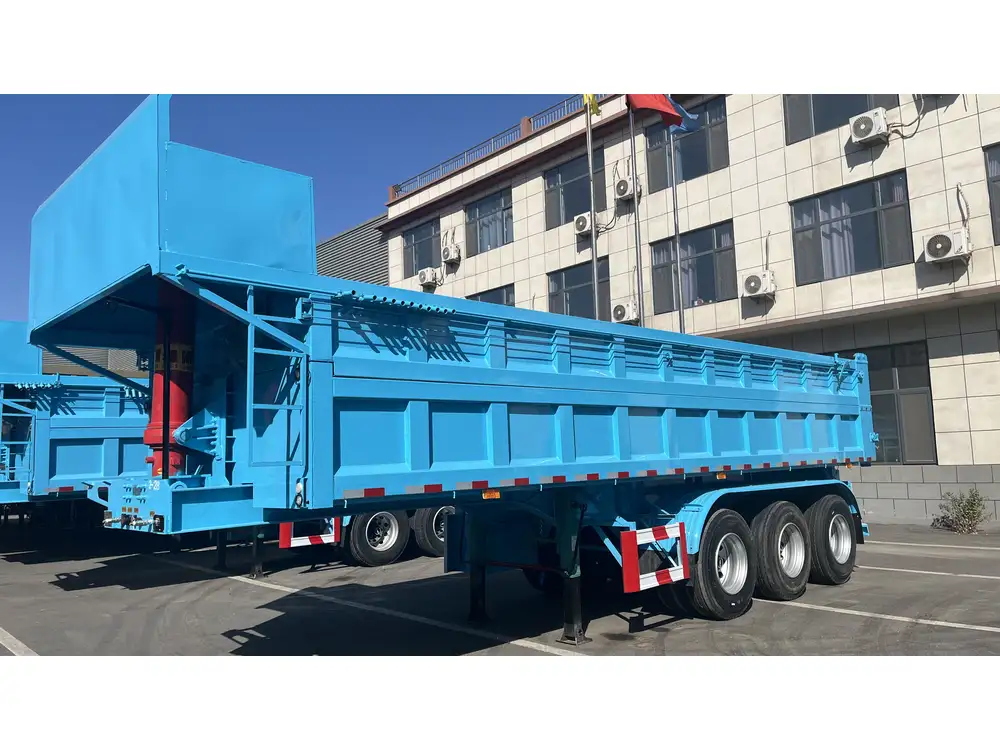
Comparison: Bumper Pull vs. Other Trailer Types
To illustrate the unique advantages of bumper pull dump trailers, we compare them with two other popular types: gooseneck trailers and utility trailers.
| Feature | Bumper Pull Dump Trailer | Gooseneck Trailer | Utility Trailer |
|---|---|---|---|
| Towing Ease | Easy to tow and maneuver | Requires a larger vehicle | Generally easy to tow |
| Payload Capacity | Moderate to high | High capacity | Typically lower |
| Dumping Functionality | Yes | Limited | No |
| Versatility | Highly versatile | Limited | Moderate |
| Overall Cost | Generally affordable | Higher initial cost | Affordable |
Implications of the Comparison
- Towing Ease: Bumper pull trailers excel in maneuverability, making them ideal for job sites with space constraints. Gooseneck trailers may offer increased stability at high speeds but demand more from the towing vehicle.
- Payload Capacity: If high-volume transport is necessary, gooseneck trailers often outperform bumper pull models. However, for many users, the capacity of bumper pull trailers is more than sufficient.
- Dumping Functionality: The specialized design of bumper pull dump trailers significantly simplifies bulk material unloading, a feature absent in utility trailers.
- Cost Considerations: When budgeting for a trailer, bumper pull models typically provide a good balance of features, performance, and cost.
Maintenance Tips for Bumper Pull Dump Trailers
To ensure longevity and optimal performance of your bumper pull dump trailer, adhere to the following maintenance practices:
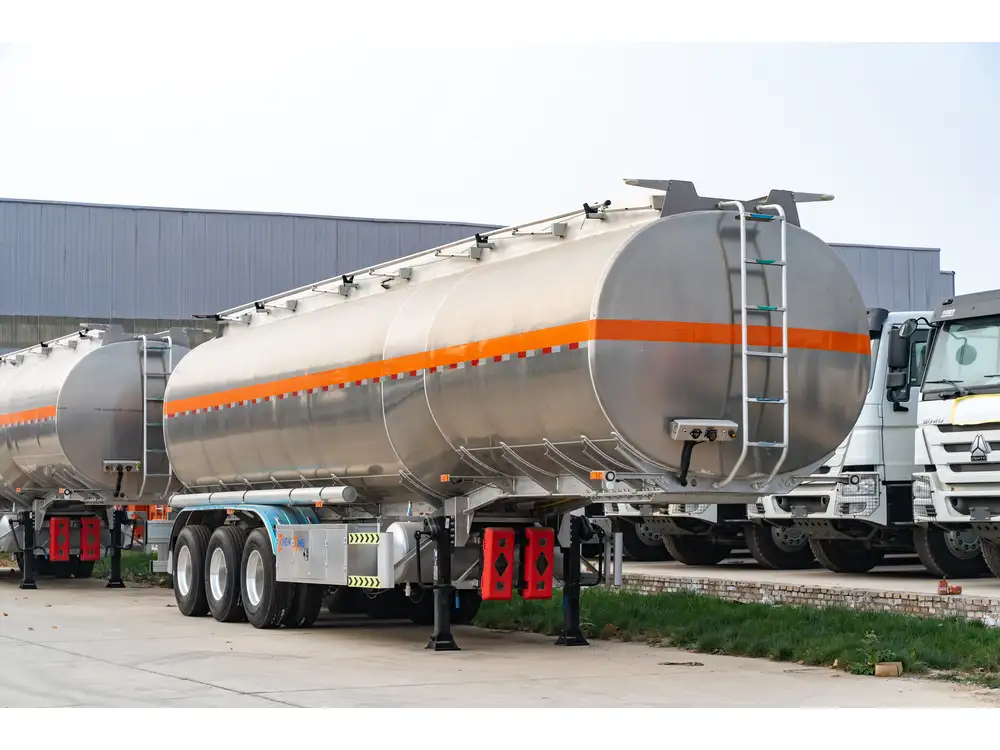
Regular Inspections
Conduct thorough inspections at intervals based on usage frequency, looking for any signs of wear and tear, particularly on the hydraulic system and frame.
Proper Loading and Unloading Practices
Follow guidelines regarding the maximum payload to avoid damage to the trailer structure and ensure safe operation during towing and unloading processes.
Lubrication
Regularly lubricate moving parts, especially the hinges and hydraulic components, to prevent rust and ensure smooth operation.
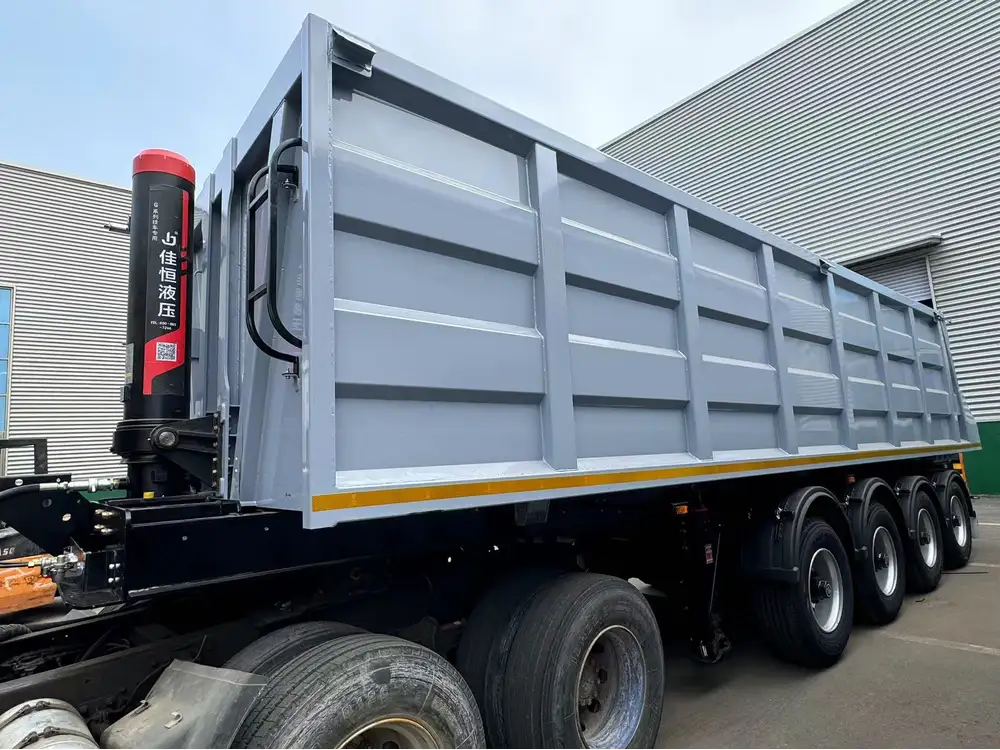
Tire Maintenance
Maintain proper tire pressure and check for tread wear, as this impacts towing safety and performance.
Conclusion: Making the Right Decision
Bumper pull dump trailers provide unmatched functionality and versatility for transporting materials efficiently. Their ease of operation, coupled with safety features, makes them ideal choices for both professionals and casual users.
When selecting a bumper pull dump trailer, consider crucial factors like payload capacity, frame material, and hydraulic systems tailored to your specific needs. Through insightful comparisons and a thorough understanding of its workings, it becomes clear how owning a bumper pull dump trailer can streamline operations significantly, ultimately driving productivity to new heights.
By understanding the features, operational mechanics, and benefits of bumper pull dump trailers, users can make informed purchasing decisions that serve their individual or business needs. Investing in a quality trailer translates to years of reliable service, enhancing efficiency in diverse applications, and improving overall work processes.



